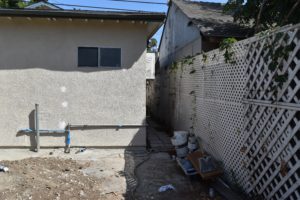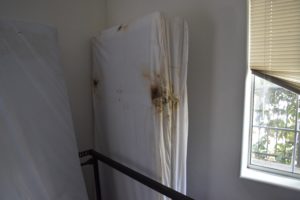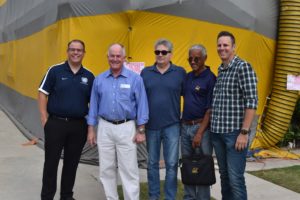Looking for Access?
Cur nutrix cantare?Est camerarius accentor, cesaris.Eposs sunt solems de varius liberi.
Register TodayCur nutrix cantare?Est camerarius accentor, cesaris.Eposs sunt solems de varius liberi.
Register TodayCur nutrix cantare?Est camerarius accentor, cesaris.Eposs sunt solems de varius liberi.
Login NowA coalition is working to make sure California legislators and the state’s Department of Pesticide Regulation (DPR) understand the impact of proposed new structural fumigation regulations. The DPR-proposed regulations have ramifications that span pest management, real estate, lending, property management, building structural safety and affordable living, especially for the poor, minorities and the elderly. The coalition, the Alliance to Protect California Homes, Property, Jobs and Health, is headed by the Pest Control Operators of California (PCOC).
At issue is a Dec. 31, 2019, state legislative deadline for DPR to address potential exposure to sulfuryl fluoride as a result of structural fumigation.
“This all dates back to the early to mid-2000s, when activists started raising concerns over the length of time that it took for mitigation measures to be put in place related to air contaminants in California,” says Chris Reardon, executive vice president of PCOC. “Sulfuryl fluoride was listed as a toxic air contaminant in 2007, which then required DPR to evaluate and address exposure to workers, bystanders and occupants. Relevant studies were done, and the data has been provided to the agency to help them make a determination. But now, as it faces an end-of-year deadline, it is proposing unnecessary regulations that are based on a risk standard that is not based on science.”

Establishment of a 5-foot barrier would make fumigation of many properties impossible. In Los Angeles County, it is estimated that structural fumigations would be reduced by 80% if a 5-foot barrier is required.
The proposed California DPR fumigation regulations include:
Reardon says the coalition’s challenge is to educate decision-makers.
“Without an understanding of fumigation, it’s easy to just say let’s make a decision, but the full ramifications of what is being proposed must be made clear,” Reardon says. “The alliance is mobilizing the industry to have our voices heard, including stakeholders such as realtors, property managers, lenders and residents, all who would be directly affected.”

One stop on the fumigation tour was a special needs home heavily infested with bed bugs.
A key aspect of that educational effort was inviting Val Dolcini, director of DPR, to spend a day recently to see firsthand three fumigations. The first site was a special-needs multiplex in a residential neighborhood, a building heavily infested with bed bugs. Dolcini saw the teardown, dead bed bugs and stains on bed sheets where the bed bugs had been feeding on residents. The second site was a home in a busy residential neighborhood that showed the impracticability of a 5-foot buffer zone. At the third site, he saw a building being tarped and Vikane® gas fumigant being introduced.
Fumigation tours are part of an ongoing effort to educate DPR decision-makers, Reardon says. In 2017, one DPR official took part in a similar fumigation site tour, and, last year, two officials participated in another. However, of the three officials who took part in prior years, only one is still with DPR.

Taking part in the day-long fumigation tour were (left-to-right) Mike McKenzie with Orkin Exterminating and president of Pest Control Operators of California (PCOC); Val Dolcini, director of the California Department of Pesticide Regulation; Chris Reardon, executive vice president of PCOC; Venard Lewis, Ph. D, emeritus urban entomologist/faculty (retired), University of California-Berkeley; and Travis Swope, president and owner of Griffin Pest Management.
“It’s a necessary challenge to educate people as agency people change,” Reardon says. “It’s impossible to regulate something from Sacramento when you do not know what it will mean in the real world. I remember that in our 2017 site visit with the DPR director, he was visibly moved when he realized a lady and her kids had stayed for two nights in a nearby parking area while her place was being fumigated for bed bugs and cockroaches. She was a single mom and could not afford a hotel and did not have another place to stay. The fact is that DPR decisions have real impact on real people’s lives.
“I made it a point to thank Val for spending a day with us because most of his time and attention is focused on agricultural issues, and his personal background is in agriculture. He thanked us for arranging to see the fumigations and told me that he wanted to understand our industry. And he assured me that he wants to stay involved in the proposed regulations.”
Reardon says the alliance messaging extends beyond the pest management industry. If enacted, the regulations would add an estimated $20 million in annual costs to consumers, add restrictions to home sales and purchases, raise rents, and put vulnerable low-income and elderly populations at unnecessary risk.
To communicate those impacts, the alliance has:
“What we need are science-based, workable regulations that benefit everyone,” Reardon says. “DPR has options and, hopefully, it won’t feel forced to move rapidly. My personal hope is that the department goes back and gives the legislature an update and gains an extension to make decisions once full consideration can be made.”
Reardon encourages industry professionals to visit the alliance website, www.protectfumigation.com, where they can send an automated email to DPR and their state legislative representatives. Industry professionals also can involve customers by asking them to visit http://tentingcali.org/, where they can easily send an automated email to DPR and their legislative representatives.